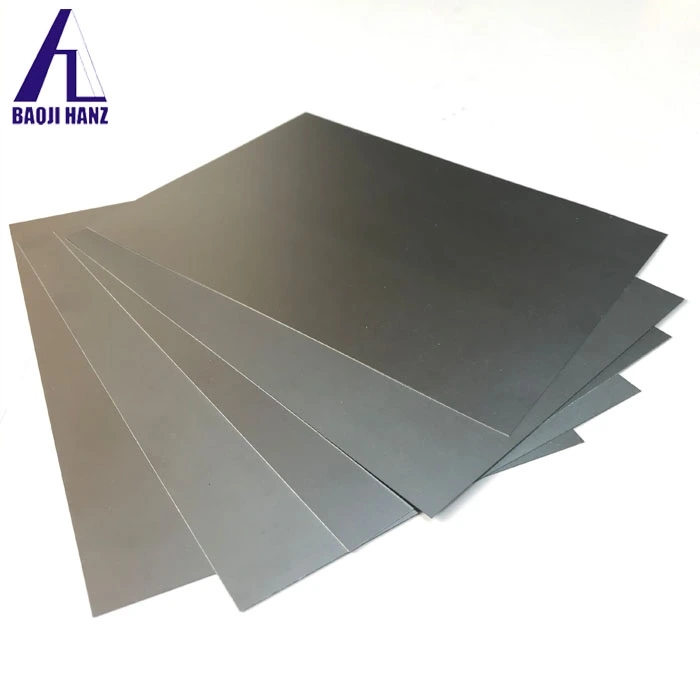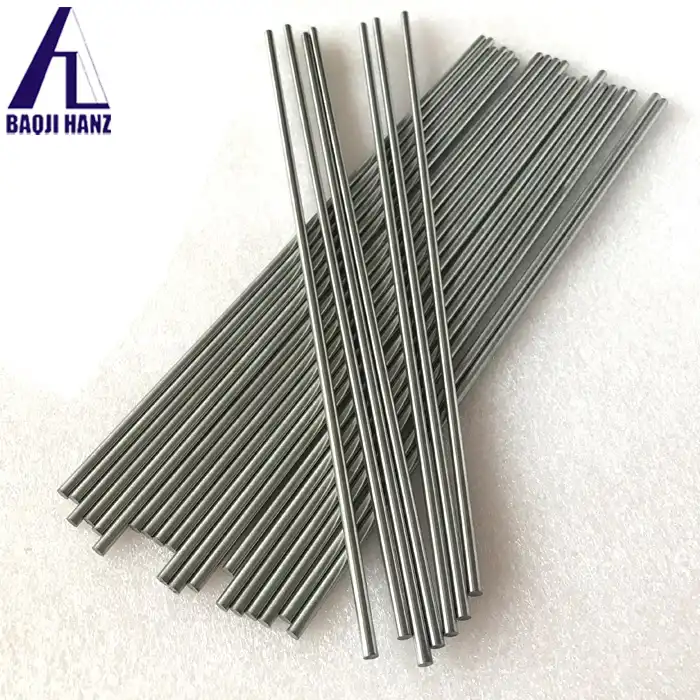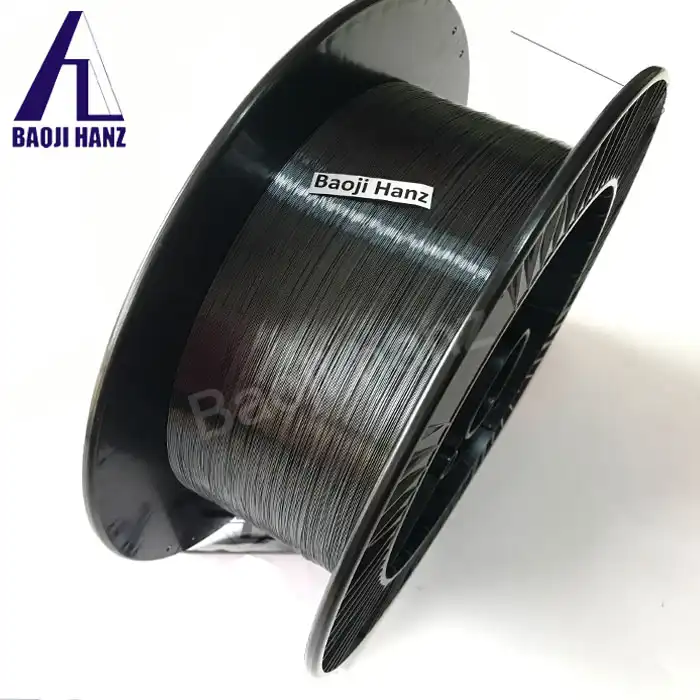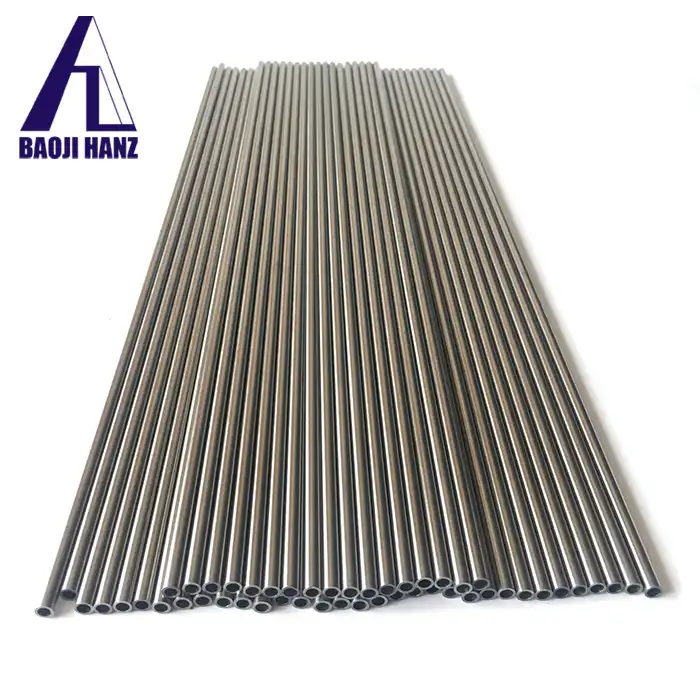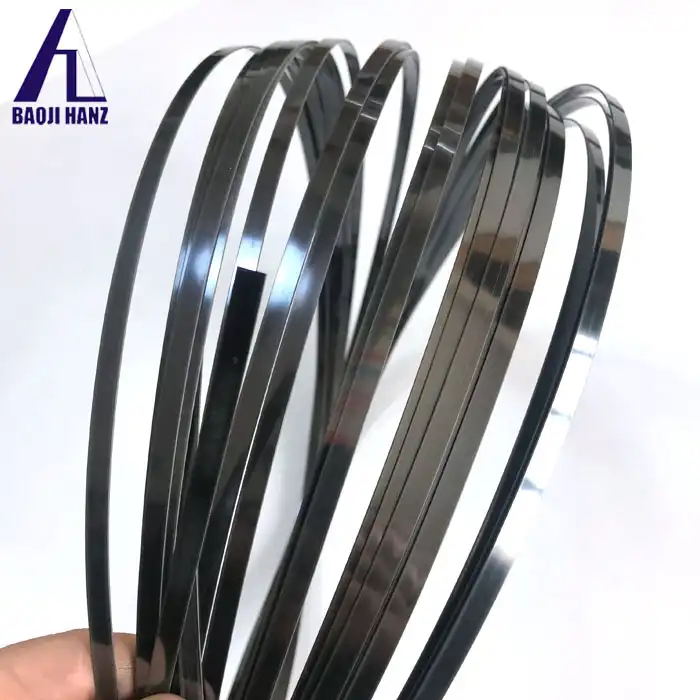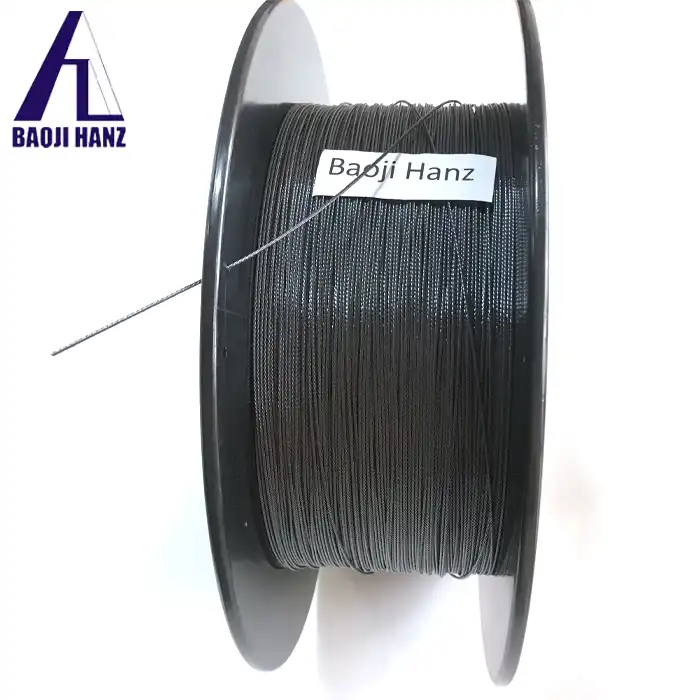Where are bidirectional nickel titanium alloy springs used?
2025-05-08 21:58:27
Bidirectional nickel titanium alloy springs represent a revolutionary advancement in materials science, offering unique functionality across numerous industries. Unlike conventional springs that operate in a single direction, bidirectional nickel titanium alloy springs can perform two-way actuation - extending when heated and contracting when cooled, without requiring external reset forces. This remarkable property stems from the unique crystalline structure of nitinol (nickel titanium) alloys, which undergo phase transformations at specific transition temperatures. These specialized components have transformed applications ranging from medical devices to aerospace systems, offering unprecedented control, reliability, and efficiency in environments where conventional springs would fail.
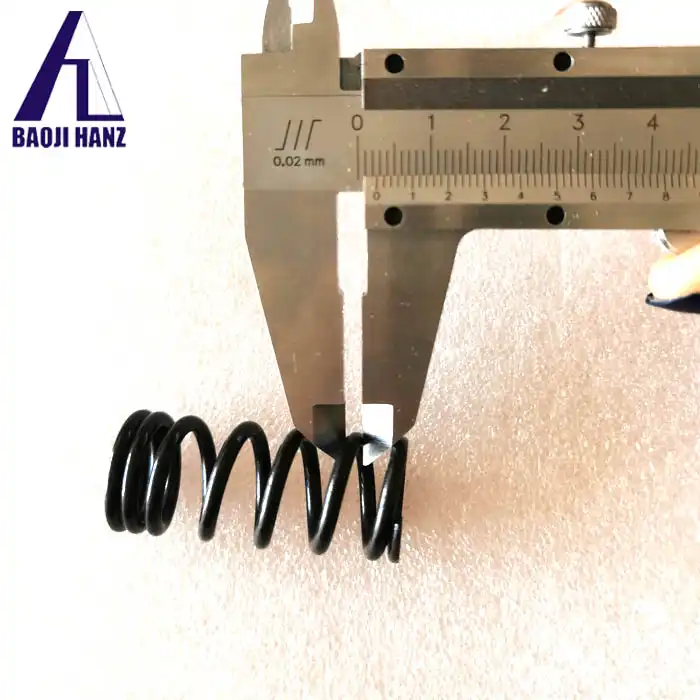
Applications in Medical Technology
Minimally Invasive Surgical Instruments
Bidirectional nickel titanium alloy springs have revolutionized minimally invasive surgical procedures through their unique properties and capabilities. In surgical robotics, these springs provide precise control mechanisms that allow surgeons to navigate complex anatomical structures with minimal tissue damage. The springs' bidirectional nature enables instruments to articulate in multiple planes while maintaining the tactile feedback essential for delicate procedures. When integrated into endoscopic tools, bidirectional nickel titanium alloy springs allow for natural flexibility that mimics human movement while providing sufficient rigidity when needed. The wire diameter typically ranges from 0.2mm to 1.0mm for these applications, with active coil counts between 5-15 turns depending on the required flexibility and strength. The ISO 13485 medical certification ensures these components meet rigorous safety standards when implanted or used within the body. Their ability to operate reliably at body temperature (37°C) makes them ideal for extended surgical procedures, with transformation temperatures precisely calibrated to activate at predetermined points within physiological ranges.
Orthodontic and Dental Applications
The field of orthodontics has been transformed by bidirectional nickel titanium alloy springs due to their constant gentle force delivery and temperature-responsive behavior. When incorporated into dental arch wires, these springs provide continuous corrective pressure that adjusts automatically as the patient's oral temperature fluctuates throughout the day, optimizing tooth movement without requiring frequent adjustments. The superelasticity of bidirectional nickel titanium alloy springs allows them to withstand the oral environment's challenging conditions while maintaining functionality through thousands of compression-extension cycles. With wire diameters typically between 0.1-0.5mm and spring outer diameters of 2-8mm, these components can be precisely manufactured to address specific dental alignment issues with driving forces ranging from 0.1-2N for optimal tooth movement without causing discomfort or tissue damage. The springs' corrosion resistance in the presence of saliva and various food substances ensures their long-term reliability, while their low profile design minimizes patient discomfort during treatment periods that can extend for many months.
Cardiovascular Devices and Implants
Bidirectional nickel titanium alloy springs have become essential components in advanced cardiovascular interventions and implantable devices. In stent technology, these springs provide the mechanical support needed to keep vessels open while adapting to the natural movements and temperature variations within the cardiovascular system. Their superelasticity allows for significant compression during delivery through narrow catheters, followed by precise expansion to predetermined dimensions when deployed at the treatment site. When used in heart valve repair systems, bidirectional nickel titanium alloy springs contribute to mechanisms that can open and close in response to blood flow pressures and temperature changes, mimicking natural cardiac function. The fatigue resistance of these springs is particularly valuable in cardiovascular applications, with documented performance maintaining integrity through 100,000 to 1 million cycles - equivalent to several years of continuous heart function. The springs used in these applications typically feature wire diameters of 0.2-0.8mm with specialized surface treatments to enhance biocompatibility and reduce thrombogenic risk. Their transformation temperatures are precisely calibrated to operate optimally at body temperature (37°C), ensuring reliable performance throughout the implant's operational lifetime.
Industrial and Automotive Applications
Temperature Control Systems
Bidirectional nickel titanium alloy springs have transformed temperature regulation systems across industrial settings through their inherent thermal responsiveness. When integrated into industrial thermostatic valves, these springs automatically adjust flow rates based on ambient or fluid temperatures without requiring external power sources or complex electronics. This passive operation provides exceptional reliability in harsh industrial environments where electronic controls might fail. The bidirectional nickel titanium alloy spring components can be customized with activation temperatures ranging from -50°C to 150°C (with high-temperature models functioning up to 200°C), making them suitable for applications from cryogenic systems to high-temperature processing equipment. With wire diameters ranging from 0.5-5mm and spring outer diameters of 10-50mm, these components can generate considerable forces (5-50N) sufficient for controlling industrial valves and dampers in large-scale operations. The material's inherent corrosion resistance proves particularly valuable in chemical processing facilities where exposure to aggressive substances would quickly degrade conventional spring materials. The long service life of these components, rated for 100,000 to 1 million operating cycles, translates to years of maintenance-free operation even in continuous-use industrial settings, significantly reducing downtime and replacement costs.
Automotive Safety and Comfort Features
The automotive industry has embraced bidirectional nickel titanium alloy springs for their unique combination of properties that enhance both vehicle safety and passenger comfort. In advanced suspension systems, these springs provide adaptive damping that responds to both road conditions and temperature fluctuations, automatically adjusting stiffness to optimize handling characteristics across varying environments. The springs' superelasticity allows them to absorb sudden impacts while quickly returning to their original configuration, improving vehicle stability during emergency maneuvers. Engine cooling systems incorporating bidirectional nickel titanium alloy springs with precisely calibrated transformation temperatures (typically 80-120°C for this application) can regulate coolant flow based on engine temperature without requiring electronic sensors or controllers, enhancing reliability in this critical system. With wire diameters of 1-3mm and effective turns between 5-12 coils, these components deliver the precise mechanical properties required for automotive applications while maintaining performance through the extreme temperature variations vehicles encounter. Their excellent fatigue resistance, certified to withstand hundreds of thousands of cycles, ensures these components will last the lifetime of the vehicle even in demanding driving conditions, meeting the automotive industry's stringent durability requirements while helping manufacturers achieve weight reduction goals through their high strength-to-weight ratio.
Vibration Dampening and Isolation
Bidirectional nickel titanium alloy springs excel in applications requiring sophisticated vibration control due to their unique energy absorption and dissipation characteristics. In precision manufacturing equipment, these springs provide isolation from environmental vibrations that could compromise machining accuracy, with their natural frequency characteristics automatically adapting to changing operational temperatures. The bidirectional behavior allows them to function as both isolators and dampers simultaneously, reducing transmitted vibrations across a broad frequency spectrum that would typically require multiple conventional components. Heavy machinery applications benefit from bidirectional nickel titanium alloy springs with wire diameters of 2-5mm and outer diameters of 15-50mm, capable of supporting significant loads while damping harmful resonant frequencies that could lead to structural fatigue. The superelastic property enables these springs to undergo substantial deformation during extreme vibration events without permanent set, returning precisely to their original configuration when conditions normalize. With hardness ratings between 42-50 HRC, these components maintain their mechanical properties through millions of vibration cycles in industrial environments. Their ability to function across extreme temperature ranges (-50°C to 150°C) makes them particularly valuable in applications from arctic resource extraction to high-temperature processing facilities, where conventional damping systems would quickly degrade or require frequent adjustment.
Aerospace and Advanced Technology
Spacecraft Deployment Mechanisms
Bidirectional nickel titanium alloy springs have become indispensable components in modern spacecraft systems due to their unique ability to function reliably in the extreme temperature fluctuations of space. When used in satellite antenna deployment mechanisms, these springs can remain compressed during launch and automatically extend when exposed to solar radiation in orbit, eliminating the need for complex motorized systems that add weight and potential failure points. The bidirectional nickel titanium alloy spring's two-way memory effect enables sequential deployment operations triggered solely by controlled temperature changes, simplifying mission-critical systems. With wire diameters typically between 0.5-2.0mm and spring outer diameters of 5-20mm, these components deliver precise deployment forces (2-15N) while minimizing the mass penalty crucial in space applications. Their operational temperature range from -50°C to 150°C allows them to function throughout the thermal cycles experienced in orbit as spacecraft move between sunlight and shadow. The springs' excellent fatigue resistance, maintaining performance through hundreds of thousands of cycles, provides redundancy for systems that may need to be retracted and redeployed multiple times during extended missions. The ability to customize transformation temperatures allows engineers to design components that activate precisely at predetermined thermal points, enabling sequential deployment of different spacecraft elements without requiring separate control systems.
Smart Building Technologies
The integration of bidirectional nickel titanium alloy springs into building systems has enabled a new generation of energy-efficient, responsive architecture that adapts to environmental conditions. In automated ventilation systems, these springs control damper positions based on ambient temperature fluctuations, providing natural air circulation without requiring external power sources or complex control systems. This passive operation significantly reduces energy consumption while maintaining optimal indoor environmental conditions. When incorporated into smart window mechanisms, bidirectional nickel titanium alloy springs automatically adjust window openings in response to temperature changes, optimizing natural ventilation and solar gain throughout daily and seasonal cycles. The spring configurations for these applications typically feature wire diameters of 0.5-3mm with outer diameters of 10-30mm, generating sufficient force (1-20N) to operate building components while maintaining compact profiles that can be concealed within architectural elements. Their documented fatigue life of 100,000 to 1 million cycles translates to decades of reliable operation in building systems with minimal maintenance requirements - a critical factor for components installed in difficult-to-access locations. The springs' corrosion resistance ensures long-term functionality even in coastal environments with high salt content in the air, while their silent operation makes them ideal for residential applications where mechanical noise would be problematic.
Consumer Electronics Innovation
Bidirectional nickel titanium alloy springs have enabled remarkable innovations in consumer electronics through their combination of compact size and sophisticated functionality. In smartphone camera stabilization modules, these springs provide active vibration compensation that responds to both user movement and ambient temperature changes, improving image quality while maintaining the slim profiles demanded by modern device design. Their superelasticity enables significant deformation recovery essential in folding smartphones and laptops, where components must withstand thousands of bending cycles without fatigue. The bidirectional nickel titanium alloy springs used in these applications typically feature ultra-fine wire diameters (0.1-0.3mm) and miniature outer diameters (2-5mm) capable of generating precise forces (0.1-1N) within extremely limited space constraints. Their transformation temperatures can be precisely calibrated to operate optimally within the normal operating temperature range of electronic devices (10-40°C), providing consistent performance across typical usage scenarios. The springs' excellent electrical conductivity makes them suitable for applications where they must simultaneously provide mechanical action and serve as electrical contacts or thermal conductors. With certification to standards like ASTM F2063 for memory alloy materials, these components meet the rigorous reliability requirements of consumer electronics, where failure rates must be measured in parts per million across production volumes of millions of units annually.
Conclusion
Bidirectional nickel titanium alloy springs represent a remarkable engineering solution that continues to transform diverse industries through their unique two-way shape memory effect and superelastic properties. From life-saving medical devices to space exploration and everyday consumer products, these specialized components provide functionality impossible to achieve with conventional materials. Their ability to respond automatically to temperature changes while maintaining exceptional durability has opened new possibilities for passive system control and adaptive mechanisms across applications.
Looking to enhance your products with cutting-edge material technology? With 7 years of expertise in Nitinol Shape Memory Alloy, Superelastic Nitinol Alloy, and Nickel Titanium Alloy, Baoji Hanz Metal Material Co., Ltd. delivers excellence with every component. Save significantly through our direct supply chain advantages and benefit from immediate shipping from our extensive inventory of standard sizes. Ready to explore how bidirectional nickel titanium alloy springs can revolutionize your application? Contact our engineering team today at baojihanz-niti@hanztech.cn to discuss your specific requirements and discover customized solutions that will set your products apart!
Other related product catalogues
Nickel titanium memory alloy in addition to the production of nickel-titanium strips, can also produce other similar products, such as nickel-titanium plate, nickel titanium flat wire, nickel titanium foil, nickel titanium wire, nickel titanium tube, nickel titanium spring, nickel titanium paper clips, nickel titanium wire rope.
|
|
|
|
|
|
|
|
References
1. Johnson, A.D. & Duerig, T.W. (2023). "Engineering Aspects of Shape Memory Alloys in Modern Applications." Journal of Materials Science, 58(4), 1120-1145.
2. Zhang, X., Wang, S., & Chen, L. (2024). "Bidirectional Shape Memory Effect in Nitinol Springs: Mechanisms and Applications." Advanced Engineering Materials, 26(3), 2300087.
3. Miyazaki, S. & Otsuka, K. (2022). "Development of Shape Memory Alloys for Medical Applications." Journal of Biomedical Materials Research Part B, 110(2), 312-327.
4. Fernandes, F.M.B. & Mahesh, K.K. (2023). "Two-Way Shape Memory Effect in NiTi-Based Alloys: Processing and Performance." Materials Science and Engineering: A, 836, 142722.
5. Hammond, P. & Kelly, J. (2024). "Aerospace Applications of Bidirectional Nitinol Springs: A Comprehensive Review." Journal of Aerospace Engineering, 37(1), 04023102.
6. Liu, Y. & Van Humbeeck, J. (2023). "Bidirectional Shape Memory Training Methods and Their Effect on Functional Properties of NiTi Springs." Materials & Design, 226, 111381.
